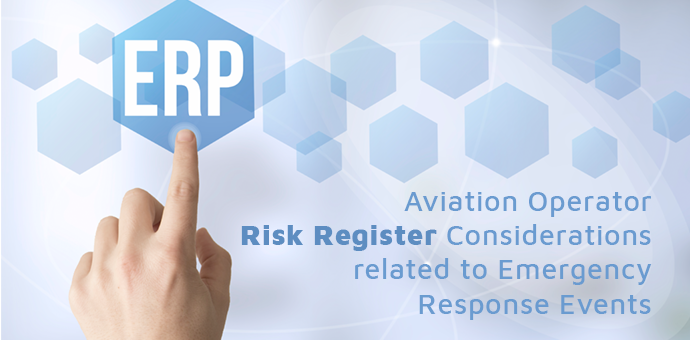Introduction Operational Risk Register
A risk register is a crucial part of your approach to managing these risks. It’s a tool to help you identify, assess and record your risks and the actions you’re taking to eliminate or minimise them.
The Following List Considers Potential Hazards (Related to Emergency Response) which can be added to the Operational Risk Register for Evaluation:
- Aviation Accident / Serious incident
- Disaster in the Premises: Fire, Explosion, Pollution, Flood
- Loss of the Working Resource: Workshop, Offices, Hangar, Aircraft
- Residual Impact of a disaster near or within the vicinity of the establishment
- Climatic events: Snow, Storm, Flood, Lightning
- Natural disaster: Earthquake, Volcanic eruption
- Food poisoning, Epidemic
- Death or Suicide at the Workplace
- Multiple victims connected to a disaster, illness or contagion
- Accident to the public transportation of the personnel
- Social movements: strike, blocking of the accesses
- Internal or external threat: attack, bomb alert, sabotage, terrorism
- Loss of energy: electricity, gas
Additional risks to be analysed include the following “Generic” issues:
- Limited or lack of management commitment – Management do not demonstrate support for the activity
- Lack of or incomplete description of roles, accountabilities and responsibilities
- Limited or lack of resource availability or planning, including required competence
- Lack of or ineffective policies
- Incorrect or incomplete procedures including instructions
- Lack of or Poor Management, Culture and or Manpower relationships
- Lack of or Ineffective Organizational Structure
- Poor organizational safety culture
- Lack of or ineffective safety management processes (including risk management, safety assurance, auditing, training and resource allocation)
- Lack or ineffective audit procedures
Using the Risk Assessment Tool
Use the example below or use the generic ICAO 5 x 5 Risk Matrix or to use the following as a tool to assess exposure by calculating the Event Risk Classification.
For each of the following items perform a risk assessment and ask the questions which help you determine the level of exposure which currently exists in your organisation by asking for each item the following 6 questions:
- Is this an issue in our organisation?
- If it is not considered an issue how can I demonstrate – where is the evidence?
- How can I measure the effectiveness of the current process?
- How effective is the documentation / training?
- If there are changes in this element how effective would the system accommodate the changes?
What to Consider During the Analysis / Review Process
Any of the following aspects can impact the level of exposure:
- People – Competence – Knowledge – Training
- Critical infrastructure – Property
- Supply chain
- Organisations Business Systems & Equipment
- IT Systems and Information Technology
- Business Operations including Process & Procedures
- Reputation of the Organisation
- Maintaining Compliance Regarding Regulatory and Contractual Obligations
- Environment Aspects
Impact and Vulnerability Considerations to be Factored During Assessment
- Casualties
- Property damage
- Business interruption
- Loss of customers
- Financial loss
- Environmental contamination
- Loss of confidence in the organization
- Fines and penalties
- Lawsuits
Next Steps
For additional information related to Emergency Response please visit the SAS Download Area: https://sassofia.com/download-area/#airline-ops-emergency-response-program
Sofema Aviation Services currently offers Emergency Response Training Support & Consultancy as Classroom and Webinar Training – with Online training forthcoming.
For details please see www.sassofia.com or email team@sassofia.com
Tags:
Sofema Aviation Services, Risk Register, Aviation Accident, Aviation Incident, Aviation Emergency Response, Risk Assessment Tool, Casualties, Property damage, Loss of customers, Financial loss, Environmental contamination, Fines and penalties, Emergency Response Training







